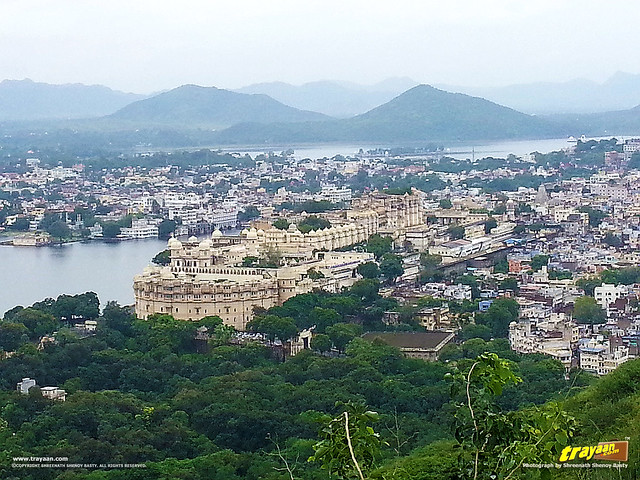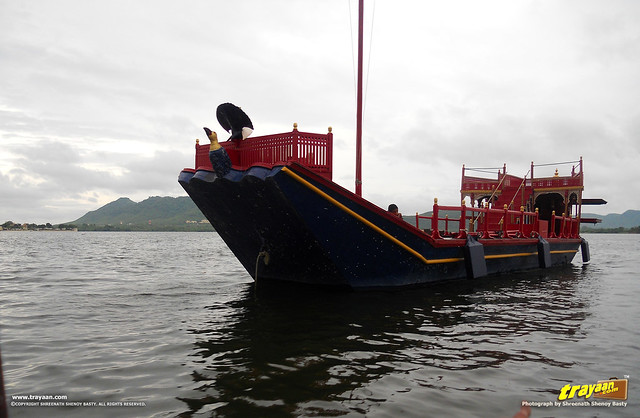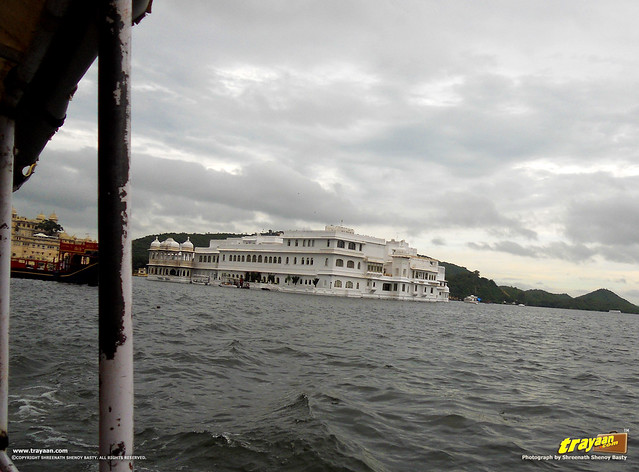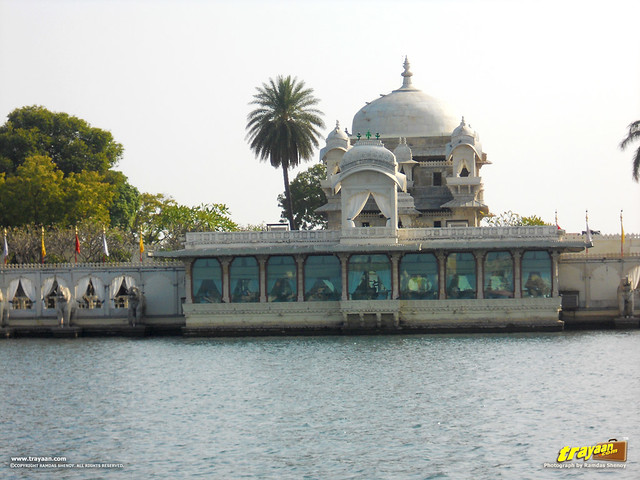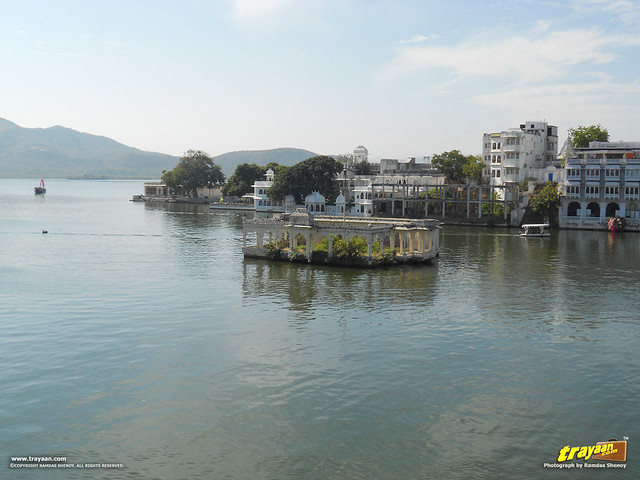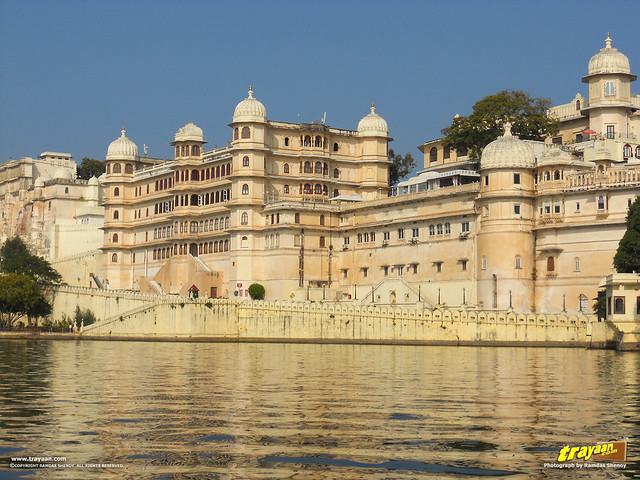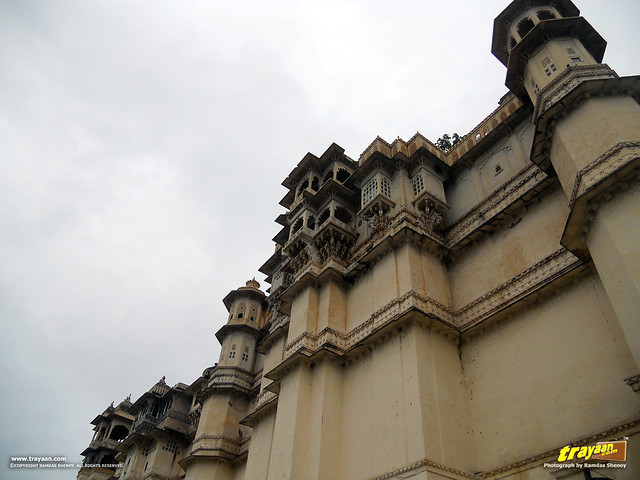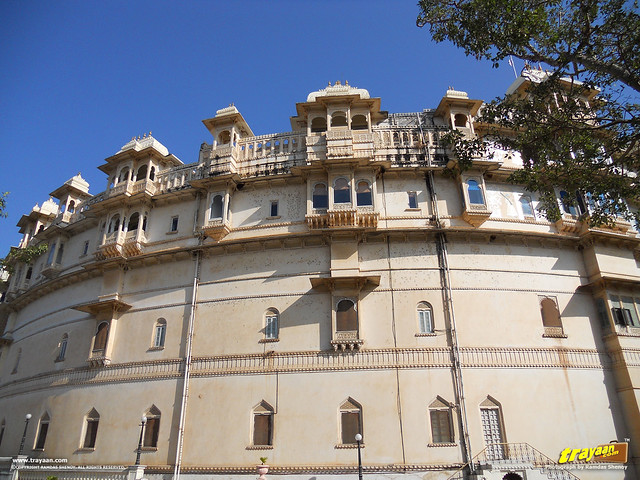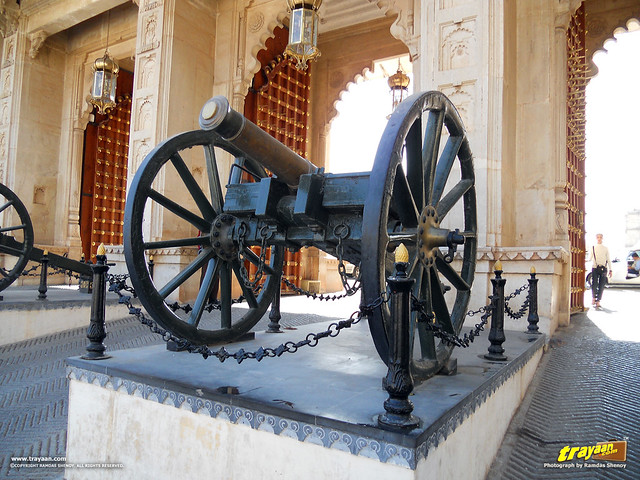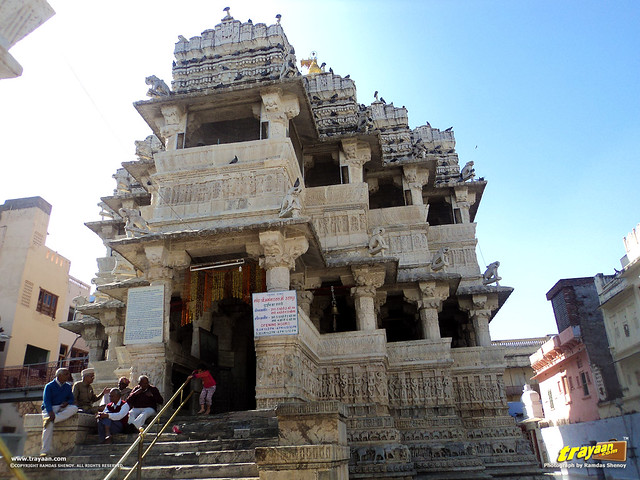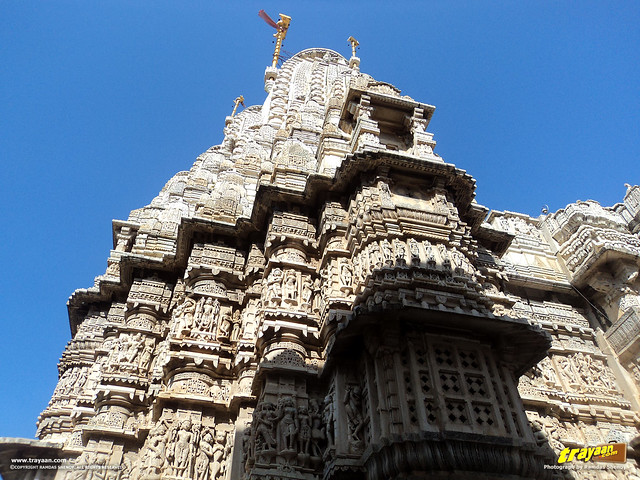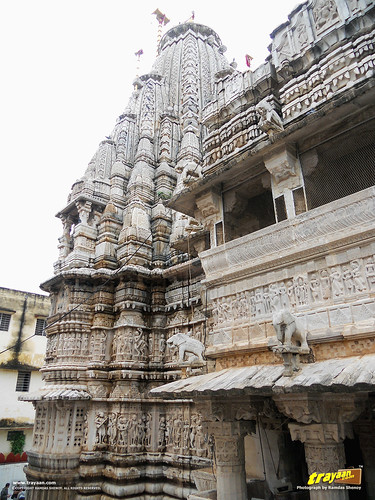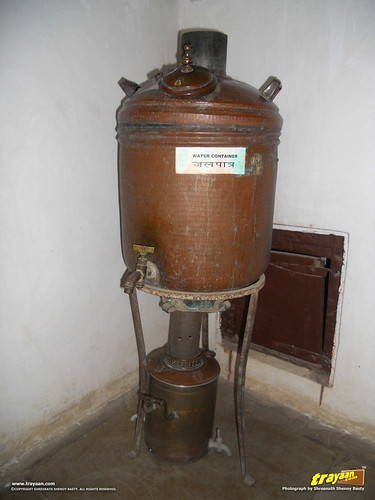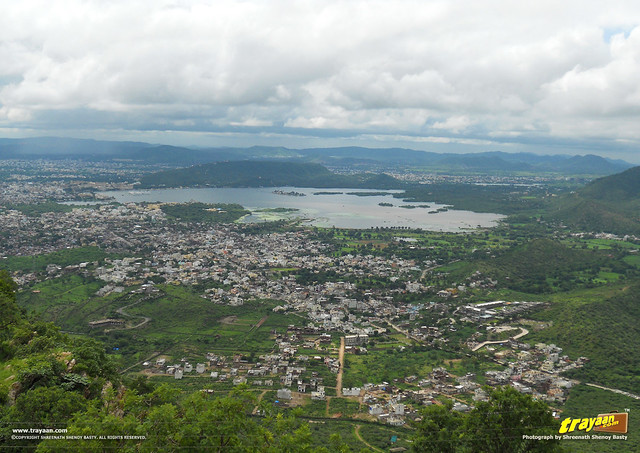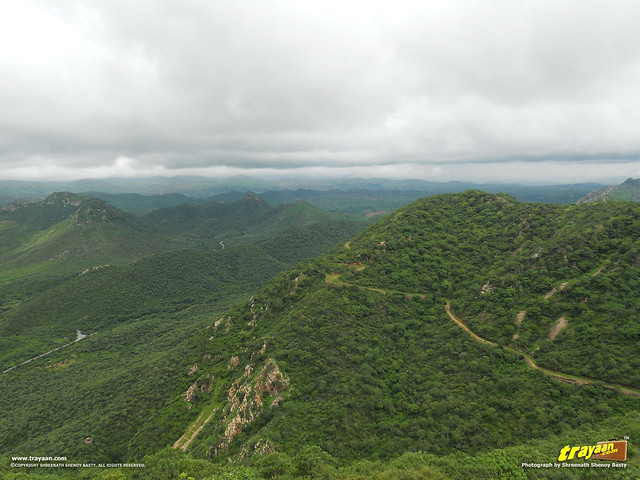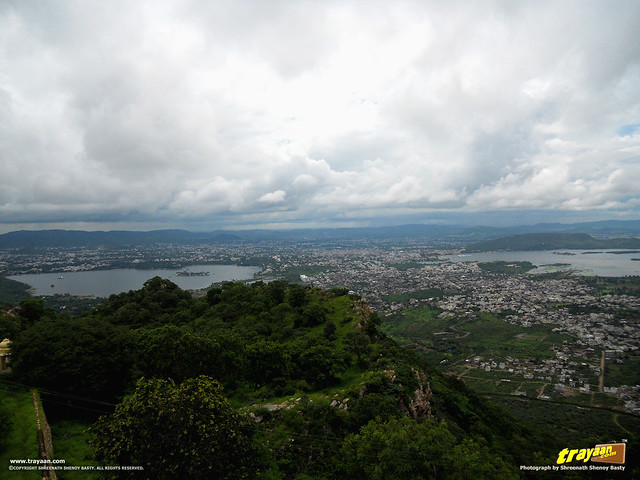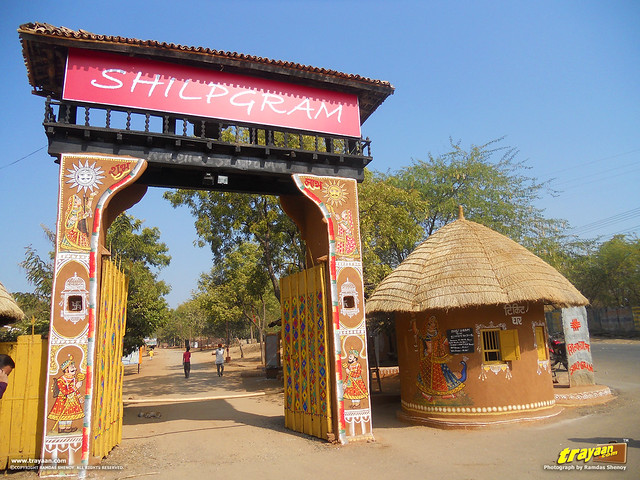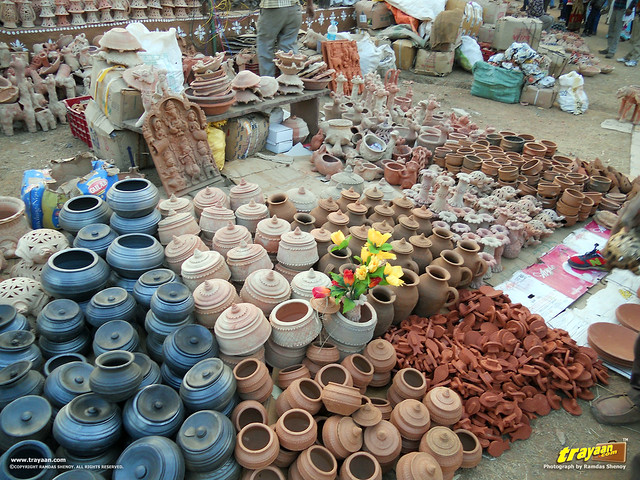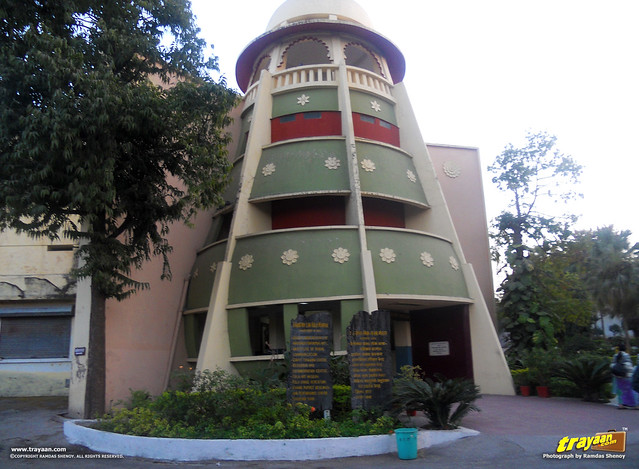A trip to the famed picturesque historical city of lakes and palaces, in Rajasthan.
Udaipur, aptly called the city of lakes, placed in foothills of the enchanting Aravali mountain range boasts of beautiful and breathtaking lakes, mesmerising monuments, palaces, serene hills and nature, is truly worth visiting at least once in our lifetime.
| Place Details & Brief History | Our Udaipur Trip | Lake Pichola | Taj Lake Palace
| Jagmandir Island Palace | City Palace of Udaipur
| Jagdish Temple | Bagore Ki Haveli - Bagore’s mansion, a museum
| Monsoon Palace or Sajjangarh Palace
| Manshapurna Karni Mata Temple
| Shilpgram | Bharatiya Lok Kala Mandal
| Fateh Sagar Lake
| Tips for Travellers | Get Directions | Getting There & Transportation | Food & Accommodations | Best times to visit
| Location Map - Must see places in Udaipur
| Nearby Attractions
About Udaipur
Udaipur, as the name itself suggests, is the city named after the famous Mewar ruler Udai Singh II since he founded this city in 1559 CE.
He moved the capitol of Mevar from Chittorgarh (Chittorgadh) as the area where Udaipur now stands, was much safer surrounded by mountains, making it difficult for the Mughals (Moguls) to attack.
It has served as capital for Mewar Kingdom and has been associated with lot of history ever since. Udaipur is the second most popular tourist destination of Rajasthan, after Jaipur.
Placed in the foothills of Aravali mountain range in Southern part of Rajasthan, near to the Gujarat border, Udaipur has always fascinated tourists around the world because of its splendid lakes, palaces, and temples. This in fact enchanted me towards this city and I decided to pay a visit there a few years back.
Our Udaipur Trip
Here is a brief account of our trip to Udaipur, the second most popular destination of Rajasthan.
Udaipur is well-connected by airways, roadways, and railways from major cities in India. We travelled by air due to limited time. There is a statue of the famous Rajput warrior king Maharana Pratap on his horse Chetak just outside the airport. This reflects how much the people of Udaipur still love and respect this great historical icon, and no wonder the Udaipur airport is also named after this famed Maharana.
As we headed from the Maharana Pratap Airport at Dhabok towards the city which is around 21 kms away from the main city of Udaipur, the atmosphere was serene and charming, with no noisy traffic and gave a calming feeling surrounded by charming nature.The city of lakes, it is aptly called so, with Pichola Lake, Fatehsagar Lake, Badi Lake, Swaroop Sagar lake being the bigger and prominent ones in the city, Goverdhan sagar lake is another lake in Udaipur, to south of Pichola lake.
Other prominent lakes in Udaipur district are Jaisamand Lake (also known as Dhebar Lake)(~59 kms from Udaipur city), Rajsamand Lake (~65 kms from Udaipur city), and Udaisagar Lake (~13 km to the east of Udaipur city).
I had a completely different opinion of Rajastan before visiting this city, as I thought it is an arid place known only for its deserts and forts. My perception was totally changed when I visited Udaipur. Here is a brief account of the places we visited.
Lake Pichola
Lake Pichola is the most picturesque and also the oldest lake in Udaipur. Two famous lake palaces which are now heritage hotels, The Taj Lake Palace (originally, Jagmahal Lake Palace) and The Jagmandir Island Palace, charmingly stand amidst Lake Pichola. The Udaipur City Palace is prominently seen on the eastern shore of this lake.Boat rides are available here, and we had a great view and experience during the ride. Some scenes from the 1985 James Bond movie “Octopussy” featuring Roger Moore were also shot here.
Pichola Lake is said to have been built by a Banjara, a gypsy who used to trade here in 1362 CE. Maharana Udai Singh enlarged this lake after he founded Udaipur and constructed a stone dam. The lake took the name from the nearby Pichola Village that was submerged when the lake was enlarged.[1][2]
Pichola lake spans across approximately 15 square kilometers of area with its east bank being almost 3 to 4 kms. It connects to Swaroop Sagar Lake by an arched bridge built by Maharana Swaroop Singh, which further connects to the Fateh Sagar Lake.
With majestic palaces, temples, and gardens on its shores, and serene hills as a backdrop towards west, with two lake palaces within its islands, Pichola lake is simply fantastic.
“If the Venetian owned the Pichola Lake, he might say with justice, ‘see it and die’”
- Rudyard Kipling
The famous Lake Palace of Udaipur
The famous Lake Palace situated within lake Pichola, on the northern side of the lake, was formerly known as Jag Niwas, built between 1743 and 1746 CE [3] under the direction of Maharana Jagat Singh II , and hence was named after him.This palace was taken over by Taj Group in 1971 and converted into a heritage hotel after additions and restoration works. This is now called as the Taj Lake Palace. This palace was Octopussy’s abode amidst the lake in the James Bond movie “Octopussy”.
Jag Mandir - The Lake Garden Palace of Udaipur
Jag Mandir is the other palace built on an island, on the southern side of Lake Pichola. Also called the "Lake Garden Palace”, it too is now a heritage hotel. Its construction was begun in 1551 CE and completed by Maharana Jagat Singh I in the 17th century. [4][5].It is also said that Mughal Prince Khurram sought refuge here in 1623 CE. His stay at the Gol Mahal, one of the palace structures in Jag mandir, inspired him to build the Taj Mahal in Agra, when he later became the famous Mughal Emperor Shah Jehan [4].
This palace is now the Jagmandir Island Palace, a heritage hotel on an island in Lake Pichola.
As these two beautiful palaces, Taj Lake Palace and Jagmandir Island Palace are now heritage hotels, I believe any tourists and visitors may not be entertained just for having a look around. But if you can afford it, then can have a stay there!
Some other mahals (palaces) and havelis (mansions) in Udaipur city which are now turned into heritage hotels are - The Lalit laxmi vilas palace (Built in 1911), two palaces along the City palace complex, Fatehprakash Palace (built in 19th-century) and the Shiv Niwas Palace, (built in early 20th century) The above three were built in the reign of Maharana Fateh Singh.
Seth ji Ri Haveli now called Shree Jagdish Mahal hotel (250 Years Old), Kankarwa Haveli (19th century), Karohi Haveli (built in 1820 CE) and Rangniwas Palace Hotel (built during 19th and early 20th century) are some heritage mansions that seem affordable. There are heritage style hotels. But these are some of the actual heritage hotels that were palaces or mansions of the bygone era.
Along the eastern shores of the picturesque Lake Pichola is the famous City Palace of Udaipur. South to the City Place complex on the banks of Lake Pichola are the Dudh Talai (meaning milk pond) with the Manek Lal Verma Park on the right, and Pandit Deendayal Upadhyay Park featuring a musical fountain. This can be a serene retreat in evenings where you can enjoy the sunset.
The glorious City Palace Complex
Standing on the east bank of Lake Pichola is a series of palaces built in different times from 1559 CE. This is the city palace complex, which is usually referred to as, “the city palace”.It is one of the most visited places of Udaipur, by visitors across the globe. Maharana Udai Singh II began building it and was completed by his successors over a period of about 300 to 400 years.
There are numerous palaces within the city palace complex, such as Dilkhush mahal, Sheesh mahal (glass and mirrors palace), Moti mahal and Krishna vilas, Bhim Vilas, Amar Vilas (with a raised garden) facing the Badi Mahal (big palace) also known as Garden Palace.
The adjacent FatehPrakash Palace (19th-century) and the Shiv Niwas Palace, a crescent shaped palace built in early 20th century were both built in the reign of Maharana Fateh Singh and are now turned into heritage hotels.
The Crystal Gallery in Fateh Prakash Palace has an amazing collection of crystals. [6]
The entire palace complex belongs to the Mewar royal family and a number of trusts take care of its maintenance. The earliest royal structure built in the complex is the Rai Angan (Royal courtyard).
The palace incorporates the medieval, Rajasthani, Mughal, European and many other architectural styles. It accommodates mix of various types of architecture one could think of around 450 years back like balconies, courtyard, pavilions, corridors, and gardens. It has rooftop gardens which were built for the queens.
The balconies of the palace provide fantastic views of “Jag Niwas” (the Lake Palace Hotel), Jag Mandir on one side and the city of Udaipur on the other. The main entry to the Palace is from the Hati Pol, or the Elephant Gate. The Bari Pol or the Big Gate brings us to triple arched gates – the Tripolia, built in 17th century.
The Mor-chowk (Peacock courtyard), gets its name from the mosaics in glass decorating its walls. The Chini mahal or Chini Chitrashala is noteworthy while a series of wall paintings of Krishna are on display in Bhim Vilas.
The city palace contains many antique articles, paintings, decorative furniture, utensils and attracts thousands of visitors every day. The most noteworthy is the body armour worn by Maharana Pratap and also his favorite horse Chetak. From this one can get an idea of Rana’s strength, to wear such a heavy armor and fight wars with a heavy sword.
Entrance to this palace costs Rs. 250 for an adult (Indian national). Of many places visited in North India, I felt this a bit expensive but the amount spent to have a tour of this palace was worth every buck. One could easily glance into history looking at the exhibits in display inside the palace.
Outside the palace there is famous “Manek Chowk” which is a large courtyard of lawns fronting the main entrance steps which leads to the palace and museum. This palace is a must visit in Udaipur.
The splendid Jagdish Temple
Built by Maharana Jagat Singh I in 1651, Jagdish Temple is decorated by beautiful and ornate carvings and is close by the city palace. One short walk from the city palace towards this temple, you can find a line of souvenir shops for tourists to cherish the memory of their visit to Udaipur.The Hindu temple is dedicated to Lord Vishnu. The temple sanctum has an idol of Lord Jagannath, the main deity which is carved out of a rock. This temple is a splendid example of either Māha Māru or the Māru-Gurjara Architecture. Ancient name of Rajasthan was Marudesh while Gujarat was called Gurjaratra.[7].
Māha Māru and Māha Gurjara coalesced to form the Māru-Gurjara architectural style in the late tenth and eleventh centuries [8].
There are beautiful and intricate carvings all around the temple structure and sanctum. This is a must visit for devotees as well as people who love fantastic architectures.
Bagore Ki Haveli - Bagore’s Mansion, a museum
Built by Amir Chand Badwa, the Prime Minister of Mewar in the eighteenth century, it is also at a walking distance from City palace, on the banks of Lake Pichola.This haveli was restored and renovated into a museum preserving Mevar’s Royal and aristrocratic culture. The building itself is the main item on display featuring its beautiful architecture, along with several courtyards, corridors, balconies, terraces, and beautiful coloured glass windows. Several items used by the Rajputs are on display here.
One can also have a look at the world’s Largest Pagdi (Turban) at Bagore Ki Haveli and be amidst puppets as there is a large room having huge collections of puppets or in short I can coin it as “Puppet Museum”. We spent an hour here looking at various exhibits in this haveli.
The Monsoon Palace
This is also known as Sajjan Garh Palace (also spelt as Sajjangarh). As the name suggests, this was initially built by Maharaja Sajjan Singh in 18th century on Bansdara Mountain of Aravali mountain range at a height of 2268 feet from sea level.Originally Maharaja Sajjan Singh wanted to build a five storied astronomical centre, but his untimely death caused the idea to be cancelled. It was completed by his successor Maharana Fateh Singh, and was later used as a palace and a lodge while hunting. We were told it was used to watch the monsoon clouds and hence called Monsoon palace.
Sajjangarh Wildlife Sanctuary surrounds the palace. You can easily access this palace which is around 5 kms from main city palace via a winding road through Sajjan Garh sanctuary by hiring a taxi or an auto rickshaw. You can even see this palace from the distant Pichola Lake.
Once atop the hill where this palace is located, there is good parking space for cars and one has to walk a bit towards the palace. The scenery around the palace is simply enthralling. You can feel a cool breeze around and such lush greenery which will take you to a different world altogether. No wonder, I thought, the Royal families built a retreat away from city atop a hill on Aravalli Range.
The palace, made of white marble has a central court with a staircase along with many rooms. The marble pillars are carved beautifully. Even though there is nothing for display in the abandoned palace, one can definitely enjoy the beautiful scenery.
This place is a great retreat for photography enthusiasts. You can get a splendid view of Udaipur city. There is no entrance fee, and you can come in the mornings and be there till noon and enjoy your moment of solace. Also, it provides great views of sunset.
This place always fascinated me in the James Bond movie “Octopussy” which we could see from the boat ride from Lake Pichola. The palace was used as residence of the chief antagonist Kamal Khan. Even though there was only a small scene in the movie from outside the palace, I was determined to explore this because of its location in a spetacular hilly terrain.
Manshapurna Karni Mata Temple of Udaipur
This is the Karni Mata Temple of Udaipur. Not to be confused with the famous “Temple of rats”, the Karni Mata temple in Deshnoke near Bikaner. But even though this temple does not house lots of rats as in the temple of Deshnoke, this temple attracts quite a number of tourists.This temple is atop the Machla Hills, near Pandit Deendayal Upadhyay Park in Udaipur. One way to reach here is by a ropeway or through stairs from the Manikyalal Verma Park. (Zoom into below map)
The best time to visit this temple is in evening as one can get splendid view of Udaipur city from this temple. Once atop you will get a panoramic view of Pichola lake, Jag Mandir and Lake Palace.
This picturesque scenery will always be etched in your minds and hence you can make this place a “must visit” in your travel itinerary. It will be a delight to you especially if you are a photography enthusiast as you get to capture some splendid snapshots here.
Shilpgram
On the way down from Sajjan garh Palace we decided to explore Shilpgram which is a complex which displays rural arts, crafts and handicrafts of various regions. For some renovation purpose most parts of this complex were closed, but still we managed to see some of the exhibits here.Household items of everyday use, metal, wooden and pottery items, along with other items used for decorative purposes are on display in the traditional huts here. You may consider visiting this place to have a glimpse of our rich cultural heritage related to rural arts and crafts.
Shilpgram complex is open from 11 AM to 7 PM and entrance ticket that costs Rs 30 for Indian nationals. There are lots of areas within this complex which will give an insight of Indian traditional culture.
Bharatiya Lok Kala Mandal
Bhartiya Lok Kala Mandal was founded by Padma Shri awardee in the field of Arts, Devi Lal Samar in 1952.[9] The main objective of the Institute is to conduct studies on the folk art, songs and festivals of regions like Rajasthan, Gujarat, Madhya Pradesh etc and to revive a vanishing folk culture. [9]Bhartiya Lok Kala Mandal is open for public everyday from 10 AM- 6 PM except on Sunday. It holds regular stage performances.
We got to see the traditional dance show which is hosted a number of times a day. The traditional dance is a worth watch as you will get a glimpse of the traditional Rajastani dance and also their regional folk songs to which they dance.
Fateh Sagar Lake
This is another artificial lake, to the north of Lake Pichola, which was originally constructed by Maharana Jai Singh, in about 1678 CE, and reconstructed by Maharana Fateh Singh.It houses within it the Udaipur Solar Observatory and the beautiful Nehru park island which is accessible by boats. Atop the Moti Magri (meaning Pearl Mount) overlooking Fateh Sagar, there is a bronze statue of Maharana Pratap on his favourite horse Chetak. Unfortunately we had to skip all these due to lack of time.
“What I find is that you can do almost anything or go almost anywhere, if you are not in a hurry.”
- Paul Theroux
Saheliyon Ki Bari is a beautiful garden in Udaipur near Fateh sagar lake and worth visiting, which adds to the list of places in Udaipur we unfortunately could not visit due to time constraints. We also wanted to visit Ranakpur about 93 kms away, for its beautiful Jain Temple of white marble, but had to cancel the idea, again due to shortage of time. If only that weekend would have been longer.
However, our Udaipur trip was completely blissful and enchanting, and there is no doubt as to why it is sometimes called the Venice of the east.
And a special thanks to Ramdas Shenoy for sharing the wonderful pictures he took along with us in this trip.
Tips for Travellers
Transportation:
Udaipur is well connected by airways, roadways and railways from all major cities in India. The Maharana Pratap airport at Dhabok is around 21 kms away from the main city of Udaipur. The railway station and bust stand are within the main city.Inside Udaipur, one can hire a taxi, an autorickshaw (a three wheeler), or local buses to certain places. There is also tonga rides available here, but it can be quite expensive. (A tonga is a horse driven carts with two wheels).
Food & Accommodations:
There are a several good places to have food and accommodation in Udaipur. You can try any of the budget hotels or even stay at a heritage hotel, which was formerly a royal palace, or a haveli (a mansion) if affordable.Best times to visit
During the winter, between October to February or March, before the summer heat begins. But it does get quite cold in the winter here. It gets extremely hot and humid during summer (March/April to May/June) and it is best to avoid during that time.If you simply love the monsoon rains, go ahead in rainy season (typically around June/July to September/October), as the place will gleaming with greenery. As it is considered an off season, there's a chance that you may get discounts or offers with lesser price too during the monsoons.
Location Map - Places to see in and around Udaipur
Zoom in and out for more detailed or vast views, or view a larger map.Some Nearby Popular Attractions
- Ahar, a villiage ~ 2 kms east of Udaipur, features an impressive cluster of cenotaphs of the Maharanas of Mewar
- Ranakpur featuring the beautiful Chaturmukh (four-faced) Jain temple made of white marble, about 93 kilometres north from Udaipur
- Mount Abu, a popular hill station in the Aravali range is ~163 kms west to Udaipur.
- Chittorgarh (also called as Chittor), featuring the famous Cittorgarh fort with the fantastic architectures, the tower of fame and the tower of victory. It is ~112 kms east of Udaipur. (If you have played the Age of Empires-3 game, then the Tower of Victory is one of the wonders you can build in it)
- Kumbhalgarh Fort, a massive and fantastic fort situated in a splendid location, about 84 kms north of Udaipur
- Eklingji, a complex of 108 temples of beautiful and intricate Maru-Gurjara architecture Built in 734 CE, it is. ~22 kms from Udaipur
External links and References:
[2] Udaipur : Lakes : Pichola Lake - Udaipur Guide
[3] "History and Heritage of Taj Lake Palace, Udaipur"- Taj Hotels Resorts and Palaces.
[4] Jagmandir Island Palace - HRH Hotels.
[5] Palace of Jugmundur in Oodipoor Lake - British Library
[6] Fateh Prakash Palace - Rajasthan Tourism - Department of Tourism, Government of Rajasthan
[7] Royal Umbrellas of Stone: Memory, Politics, and Public Identity in Rajput Funerary Art by Melia Belli Bose, BRILL, 2015. ISBN 9004300562, 9789004300569
[8] The Sculpture of Early Medieval Rajasthan by Cynthia Packert Atherton, BRILL, 1997. ISBN 9004107894, 9789004107892
[9] Bhartiya Lok Kala Mandal
External videos on Udaipur:
Some Books worth reading:
[2] George Michell; Antoni Martinelli (1994). The Royal Palaces of India. (London: Thames and Hudson Ltd). pp. 130–135. ISBN 0-500-34127-3.
Shreenath Shenoy



